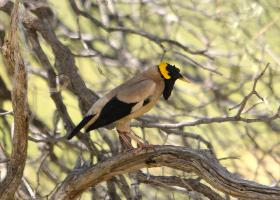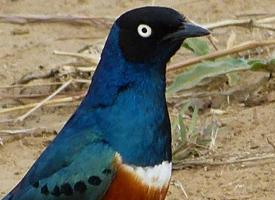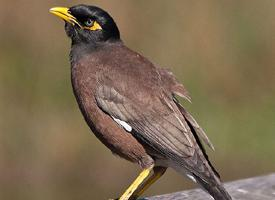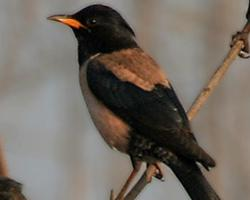
Váhy a míry
| Délka | 20 cm |
|---|
Popis zvířete
The Wattled Starling, Creatophora cinerea, is a distinctive bird species found across the African continent, notable for its remarkable appearance and fascinating behavior. This bird belongs to the starling family, Sturnidae, and is particularly known for the conspicuous wattles present in males during the breeding season, from which it derives its name.Physical Description:
The Wattled Starling is a medium-sized bird, with adults measuring about 19-21 cm in length. The species exhibits slight sexual dimorphism, particularly noticeable during the breeding season. Both males and females have predominantly grey plumage, which can appear almost silver in direct sunlight, and their wings and tail are tipped with iridescent shades that can range from green to blue, depending on the light. However, it's the male that truly stands out during the breeding season with its remarkable facial wattles. These wattles are bright yellow, fleshy appendages that hang down from the base of the beak and are thought to play a crucial role in attracting a mate. Outside the breeding season, these wattles recede and are less noticeable, making the males and females more similar in appearance.
Juvenile Wattled Starlings are more drab in coloration, lacking the iridescent wings and tail, and do not have the distinctive wattles, making them less conspicuous than the adults.
Behavior and Diet:
Wattled Starlings are highly social and nomadic birds, often found in large flocks that can number in the thousands. These flocks are known to move unpredictably across the savannahs and grasslands, following patterns of rainfall that stimulate the growth of their primary food sources. Their diet primarily consists of insects, including grasshoppers, beetles, and caterpillars, which they forage from the ground or pick off from vegetation. During the breeding season, they may also consume fruits and seeds.
Breeding and Nesting:
The breeding behavior of the Wattled Starling is closely tied to the seasonal rains. They are colonial nesters, with several pairs often nesting in close proximity to each other, sometimes even in the same tree. The nest is a rather untidy structure, made of grass and twigs and lined with finer materials. It is usually placed in a tree or shrub. The female lays 2 to 4 eggs, which are incubated for about 14 days. Both parents are involved in feeding the chicks, which fledge approximately 18 days after hatching.
Conservation Status:
The Wattled Starling is currently listed as Least Concern by the International Union for Conservation of Nature (IUCN). It benefits from its wide range and large population size, as well as its ability to adapt to a variety of habitats, including those altered by human activities. However, like many species, it could face threats from extreme changes in climate and habitat loss in the future.
In summary, the Wattled Starling is a fascinating bird, not only for its distinctive appearance during the breeding season but also for its nomadic lifestyle and social behavior. It is a species that highlights the diversity and adaptability of Africa's avian fauna.
Podobná zvířata
Nové fotografie zvířat
Top 10 zvířat
- Chinese water dragon (Physignathus cocincinus)
- Galápagos tortoise (Geochelone nigra complex)
- Dolphin gull (Leucophaeus scoresbii)
- Japanese macaque (Macaca fuscata)
- Colombian red howler (Alouatta seniculus)
- Sea urchins (Echinoidea)
- Moustached guenon (Cercopithecus cephus)
- Diana monkey (Cercopithecus diana)
- Common reed warbler (Acrocephalus scirpaceus)
- Common house mosquito (Culex pipiens)


